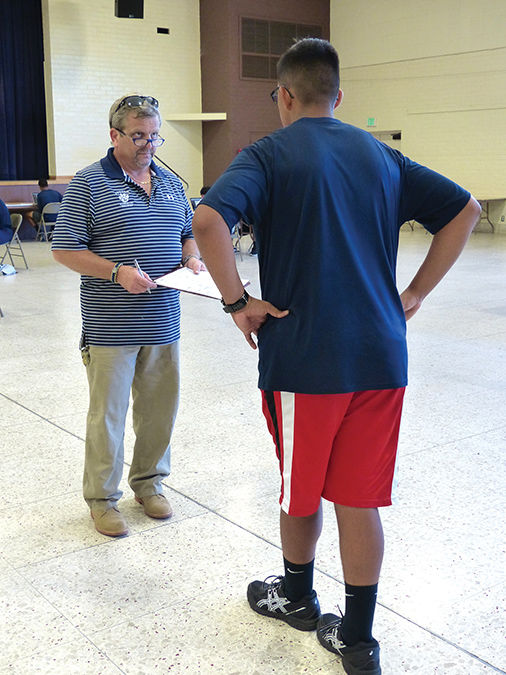In 2012, 3.8 million concussions were incurred by high school athletes in the United States — double the number in 2002, according to studies by the Centers for Disease Control. Among teens 14-19, concussions jumped at least 200 percent during the last decade, according to the American Academy of Pediatrics.
The number one head-health-risking sport was, no surprise, football, followed by ice hockey and soccer. The best estimate is that one-in-five high school kids playing sports will suffer a concussion over the course of a season.
The first-time blows suffered by high school athletes were euphemistically referred to as getting their “bell rung.” They may just have momentarily “seen a few stars” and had a sudden severe headache that would disappear by morning.
But head hits after that initial blow can be a lot more problematic, resulting in permanent brain damage. In fact, cumulative sports concussions raise the likelihood of a young person experiencing long-term neurological disabilities, ranging from short-term memory loss to full-blown dementia, by 39 percent.
No minor head trauma
Tim Moscicki, sitting at a table near the doorway of Loyola’s off-white-walled cavernous auditorium, checking in students for concussion baseline tests on the afternoon of July 24, knows about these alarming stats all too well. They’re the underlying reason why the longtime Cub athletic trainer started giving student athletes in heavy contact sports like football and lacrosse impromptu, field-side concussion exams years ago.
It’s also why he’s spearheading an effort to do baseline tests for all 1,200 of the private Catholic school’s male students for the very first time.
“When I first started as an athletic trainer at Loyola 25 years ago, if you were headache-free for 24 hours after a concussion, we’d let you go back to practice,” he recalled. “I mean, that’s how far it’s advanced. There’s no such thing as a minor concussion or mini-concussion anymore. You can’t use the words ‘getting your bell rung’ or ‘getting dinged.’ Right now it’s just ‘concussion.’
“And the thing is with the teenage brain, if we can just let it rest, a lot of times there’s no lingering effects. But you’ve got to give the brain time to heal. And there’s no one specific guideline. That’s what’s so complicated about concussions.”
Moscicki believes getting baseline measurements on cognitive skills, such as remembering words and reading crooked letters ASAP, plus balancing exams, like standing on one foot, are invaluable. Why? Because when students are suspected of having concussions, the measurements concretely show how far away from their normal individual baselines they really are.
This particularly comes in handy in assessing high school jocks and non-athletes who want to return to the field or classroom before they’re really ready.
“If these are the guidelines we’ve been using for athletes for years, they should help with all students, including those who have gotten hurt off campus skateboarding or snowboarding or whatever,” he said. “It should help us know if they’re getting better or not.
“I don’t know how many times I’ve had to send a kid home the first hour because he tried to come to school with a concussion. They can’t even get through the first hour because their headache is so bad, the light bothering them. That’s happened to athletes, but there were more non-athletes who were hurt somewhere else.
“Before, it was hard to track and make sure they were doing OK,” he pointed out. “So the administration said, ‘Well, let’s get a baseline on everyone, and then it’ll help doctors and teachers.”
So far, the head athletic director and his crew have gotten baselines on more than half of Loyola’s 1,200 students. Testing will continue and be completed in September.
Off campus injuries
Principal Frank Kozakowski is thankful. Recently, the number of students diagnosed with concussions has gone up, he says, especially with head injuries happening away from campus. Deciding when these teens are really ready to come back to school is dicey at best.
“If you talk to any high school principal, I think they will tell you in the last two years we’ve seen a real explosion of kids getting diagnosed with concussions — not solely out of school athletics, but snowboarding, skateboarding, car accidents, anything that causes the head to snap. I mean, teenage boys being teenage boys are rough and rumble, and things can happen.
“So it’s not just athletes, and it’s not just athletes in the big contact sports of football and lacrosse and soccer with head-butts. It can really happen to anyone. The idea of doing this baseline isn’t going to prevent concussions or solve the concussion issue,” he stressed. “But it gives us data that we can help figure out how quickly the student can return to the classroom or the practice field.”
As a freshman at Loyola, the principal’s son played water polo last year. Fortunately, Matt Kozakowski made it through the season unscathed. He got his new baseline measurements last week, and reports the hardest part wasn’t standing on one foot, eyes closed with hands on hips. That came after, saying the months backward from July.
Having taken an online baseline concussion test for water polo, this one didn’t really faze him. He thinks it’s a good idea that everybody is getting baselined. One of his sister’s friends was skateboarding without a helmet, wiped out and hit her head, requiring a brain scan and missing more than a month of school.
“And there are things in everyday life where you could get a concussion but you just really don’t realize,” Matt said. “Like being in a car crash not bad enough to have a wreck, where you’re hit lightly. So I think getting tested is a good thing because, like, there’s no bad that could possibly come from it. It’s just trying to protect the student body.
“And if you do get hurt, you don’t necessarily want to come back to class immediately,” he noted. “So it’s like they care more about our personal safety here.”

